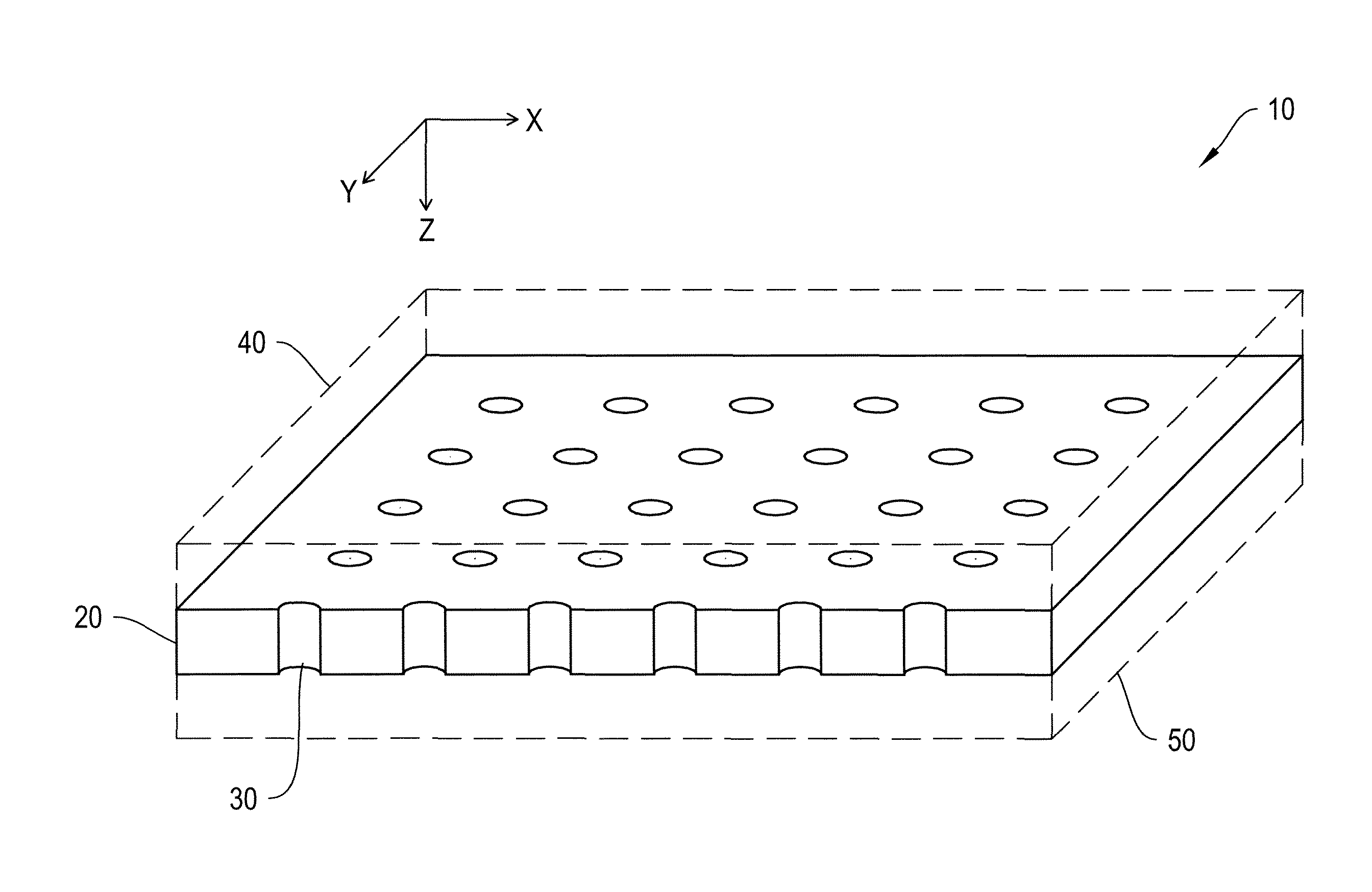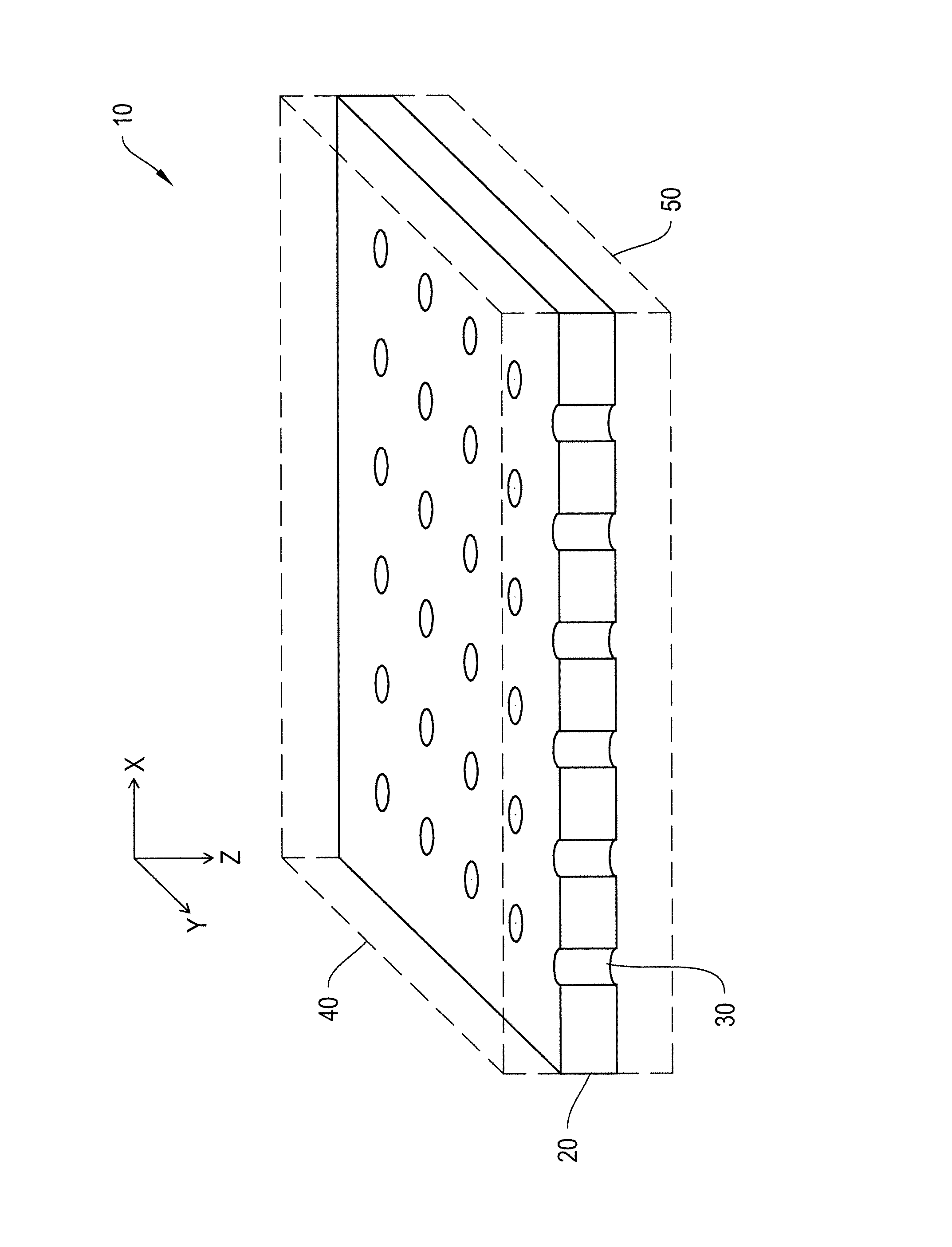Thermally conductive foam product
a technology of thermal conductivity and foam, which is applied in the direction of semiconductor/solid-state device details, lighting and heating apparatus, medical instruments, etc., can solve the problems of increasing the complexity of the design, increasing the size of the device, and increasing the complexity of the circuit design of modern electronic devices, so as to improve the heat transfer effect of the electronic device, improve the thermal conductivity, and facilitate the preparation
- Summary
- Abstract
- Description
- Claims
- Application Information
AI Technical Summary
Benefits of technology
Problems solved by technology
Method used
Image
Examples
example
[0042]A foam interface pad was prepared as follows. A THERM-A-GAP™ G579 product, manufactured and sold by the Chomerics division of Parker Hannifin Corporation, was evaluated for thermal conductivity at two thicknesses: 0.070 inches and 0.130 inches. A 0.070 hole punch was used to punch holes in the samples. Two different hole patterns were used. The first pattern had holes every 0.25 inches in the X direction and every 0.5 inches in the Y direction. The second pattern had holes every 0.25 inches in both the X and Y directions.
[0043]The pads were then tested for thermal impedance per ASTM 5470 and compression deflection.
Results:
[0044]
Sample Blank Thickness Thermal Impedance Force to Deflect#Area(inches)(10 PSI) in{circumflex over ( )}2C / W50% (lbs)1~200.0701.0382~400.0701.0263~200.1301.5314~400.1301.625
PUM
| Property | Measurement | Unit |
|---|---|---|
| diameter | aaaaa | aaaaa |
| thickness | aaaaa | aaaaa |
| density | aaaaa | aaaaa |
Abstract
Description
Claims
Application Information
 Login to View More
Login to View More - R&D
- Intellectual Property
- Life Sciences
- Materials
- Tech Scout
- Unparalleled Data Quality
- Higher Quality Content
- 60% Fewer Hallucinations
Browse by: Latest US Patents, China's latest patents, Technical Efficacy Thesaurus, Application Domain, Technology Topic, Popular Technical Reports.
© 2025 PatSnap. All rights reserved.Legal|Privacy policy|Modern Slavery Act Transparency Statement|Sitemap|About US| Contact US: help@patsnap.com


